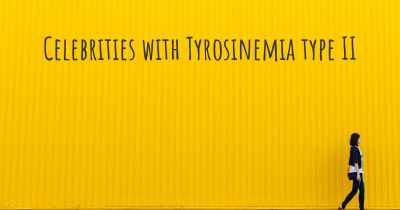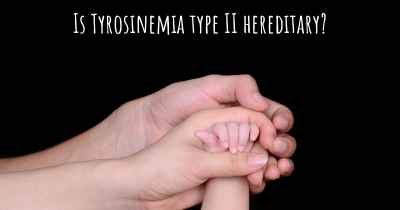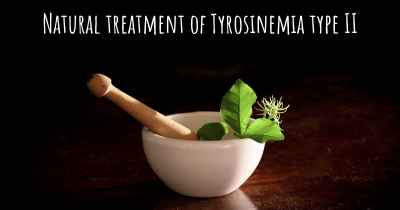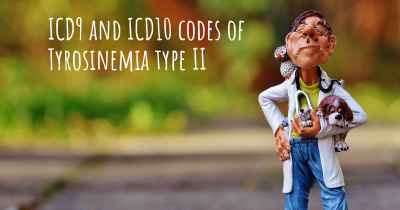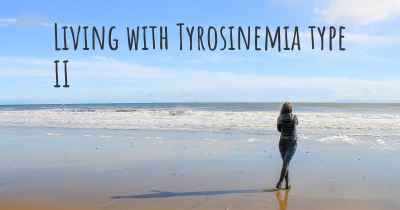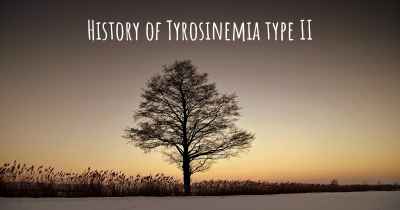What is the life expectancy of someone with Tyrosinemia type II?
Life expectancy of people with Tyrosinemia type II and recent progresses and researches in Tyrosinemia type II
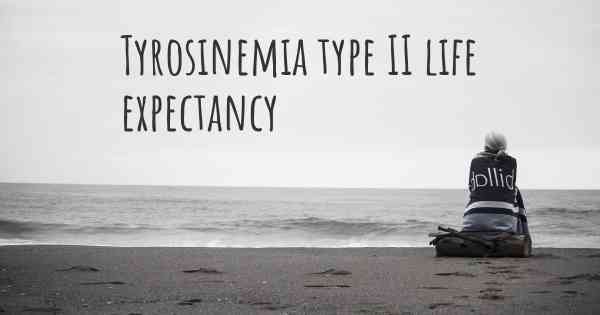
Tyrosinemia type II is a rare genetic disorder that affects the body's ability to break down the amino acid tyrosine. This condition can lead to a buildup of toxic substances in the body, causing various health problems. The life expectancy of individuals with Tyrosinemia type II can vary depending on several factors, including the severity of the condition and the effectiveness of treatment. Early diagnosis and proper management can significantly improve outcomes. With appropriate medical care, individuals with Tyrosinemia type II can lead relatively normal lives and have a near-normal life expectancy. However, it is crucial for affected individuals to receive ongoing medical supervision and adhere to a strict low-protein diet to prevent complications.
Tyrosinemia type II, also known as oculocutaneous tyrosinemia or Richner-Hanhart syndrome, is a rare genetic disorder that affects the body's ability to break down the amino acid tyrosine. This condition is caused by a deficiency of the enzyme tyrosine aminotransferase (TAT), which is responsible for converting tyrosine into other compounds that the body needs.
Symptoms:
Individuals with Tyrosinemia type II typically present with a range of symptoms that primarily affect the eyes and skin. The most prominent feature is the development of painful, small, and raised bumps on the surface of the cornea, known as corneal ulcers. These ulcers can lead to severe eye pain, redness, tearing, and sensitivity to light. Additionally, individuals may experience skin lesions, particularly on the palms of the hands and soles of the feet.
Management and Treatment:
Currently, there is no cure for Tyrosinemia type II. However, the condition can be managed through various treatment strategies. The primary goal of treatment is to reduce the levels of tyrosine in the body, as elevated levels can lead to the formation of toxic byproducts that cause the characteristic symptoms.
Dietary Modifications:
One of the mainstays of treatment is a strict low-tyrosine diet. This involves avoiding foods that are high in tyrosine, such as certain meats, dairy products, and some fruits and vegetables. Instead, individuals are encouraged to consume foods low in tyrosine and to supplement their diet with special medical formulas that are specifically designed for individuals with Tyrosinemia type II.
Medication:
In some cases, medication may be prescribed to help manage the symptoms of Tyrosinemia type II. For example, eye drops or ointments containing antibiotics or corticosteroids may be used to alleviate the discomfort caused by corneal ulcers. Additionally, pain medications can be prescribed to manage any associated pain or discomfort.
Prognosis and Life Expectancy:
The prognosis for individuals with Tyrosinemia type II can vary depending on the severity of the condition and the effectiveness of treatment. With early diagnosis and appropriate management, many individuals can lead relatively normal lives. However, it is important to note that the long-term outlook for this condition is not yet well-established due to its rarity.
While there is limited data available on life expectancy specifically for Tyrosinemia type II, it is generally believed that with proper treatment and adherence to a low-tyrosine diet, individuals can have a normal lifespan. However, it is crucial for individuals with this condition to receive regular medical follow-ups and adhere to their treatment plan to minimize the risk of complications.
Conclusion:
Tyrosinemia type II is a rare genetic disorder that primarily affects the eyes and skin. Although there is no cure, the condition can be managed through dietary modifications and, in some cases, medication. With appropriate treatment and adherence to a low-tyrosine diet, individuals with Tyrosinemia type II can lead relatively normal lives and have a normal life expectancy. However, it is important for individuals to work closely with their healthcare team to ensure proper management and minimize the risk of complications.
